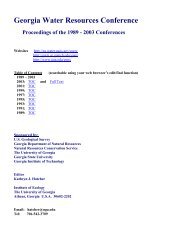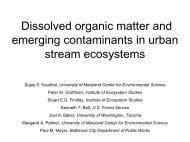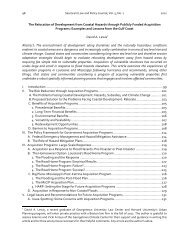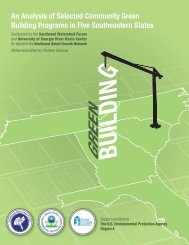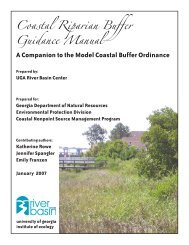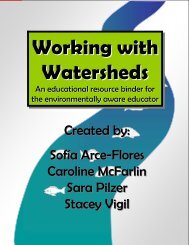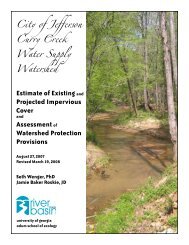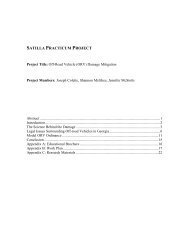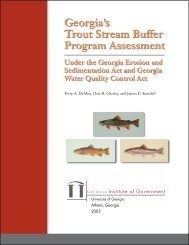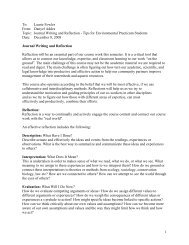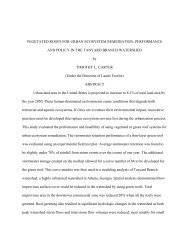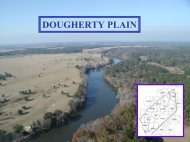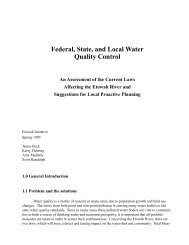The use of constructed wetlands for wastewater treatment
The use of constructed wetlands for wastewater treatment
The use of constructed wetlands for wastewater treatment
Create successful ePaper yourself
Turn your PDF publications into a flip-book with our unique Google optimized e-Paper software.
18 <strong>The</strong> <strong>use</strong> <strong>of</strong> <strong>constructed</strong> <strong>wetlands</strong> <strong>for</strong> <strong>wastewater</strong> <strong>treatment</strong><br />
2.5-4 cm. <strong>The</strong> inflorescences are reddish brown in colour and covered with fluffy white<br />
hairs when mature. It is <strong>of</strong>ten found in open areas, ex-mining ponds, lakes and in fresh<br />
and brackish water.<br />
Spike Rush Eleocharis dulcis - <strong>The</strong> Spike Rush is a perennial plant. It is a tufted<br />
plant with leafless slender stems. It has hollow stems with internal transverse partitions.<br />
<strong>The</strong> inflorescence is a single spikelet at the end <strong>of</strong> the stem, upright with glumes that<br />
spirally arranged. It is brownish in colour and 1.5-6.0 cm in length. It is normally found<br />
in open wet places, in brackish and freshwater swamps, rice fields, ponds and lakes.<br />
Wetland design<br />
<strong>The</strong> criteria <strong>for</strong> wetland design include site selection, hydrologic analysis, water<br />
source and quality, plant material selection, soil and geologic conditions, buffer zone<br />
placement and maintenance procedures (Kusler and Kentula, 1996). Hydrology is<br />
one <strong>of</strong> the primary factors in controlling wetland functions (Hammer, 1989). Flow rate<br />
should be regulated to achieve a satisfactory <strong>treatment</strong>. Sufficient water supply is<br />
crucial to establish a viable <strong>constructed</strong> wetland system.<br />
<strong>The</strong> pilot tank system planted with Common Reed at University Malaysia<br />
Wetlands are highly ephemeral and variable in their capabilities <strong>for</strong> sequestering and<br />
retention <strong>of</strong> nutrients and other pollutants. Initial retentive capacities may be high<br />
<strong>for</strong> certain pollutants in the short-term, but may change markedly over the long-term<br />
(Wetzel, 2000).<br />
A pilot study on the efficiency <strong>of</strong> the <strong>constructed</strong> wetland <strong>treatment</strong> system is being<br />
carried out (Sim, 2002). Two aquatic plants Lepironia articulata and Phragmites



